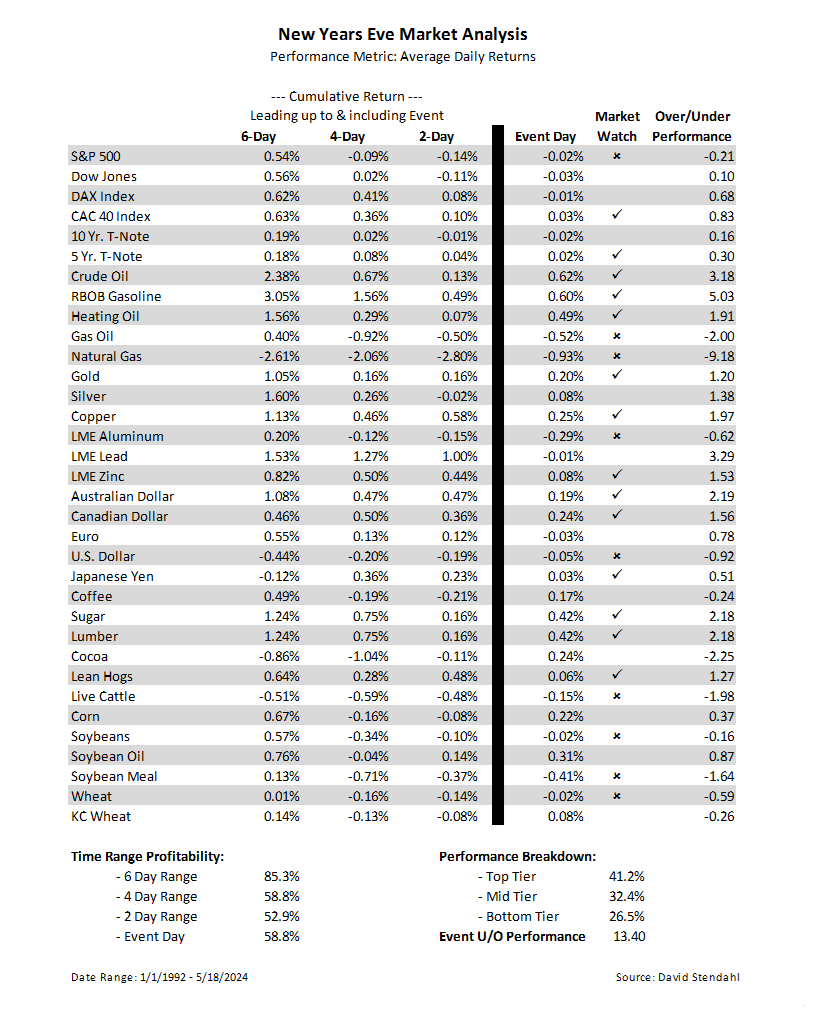Event: New Year’s Eve
New Year’s Eve celebrates the end of the current year and opportunities that lay ahead in the new year. The days that lead up to New Year’s eve incorporate some but not all of the trading days associated with the Santa Claus Rally. The Santa Claus Rally, made famous by Yale Hirsch, begins after Christmas and ends two days into the new year. Our analysis shortens the time span by looking at the trading days leading up to New Year’s Eve on December 31st.
The question we seek to answer is … Do the markets, in general, go out with a bang or a whimper when the clock strikes midnight at the end of the year?
Market Comparision
How do the markets perform leading up to and including the last trading day of the year? The analysis table below breaks down each of the 30+ markets into four separate trading periods. These time frames span 6-days, 4-day, 2-days, and the event day itself. The return performance for each time frame is measured against its normal performance during the year to calculate a final over or underperformance return. This metric quantifies, in percentage points, the advantages or disadvantages associated with New Year’s Eve. Markets highlighted with a checkmark or an “x” should be closely monitored for potential strength or weakness heading into the event.

Calendar Breakdown by Events
All trading involves risk. Leveraged trading has large potential rewards, but also large potential risk. You must be aware of the risks and be willing to accept them in order to invest in the futures and options markets. Don’t trade with money you can’t afford to lose. This is neither a solicitation nor an offer to Buy/Sell futures or options. No representation is being made that any account will or is likely to achieve profits or losses similar to those discussed. The past performance of any trading system or methodology is not necessarily indicative of future results.
Our strategies have not been developed based on knowledge of or with reference to your particular circumstances, such as financial position, goals, risk-reward preferences, tax situation, brokerage arrangement, investment or trading experience, and so forth. Hence no content or model published here constitutes a recommendation that any particular security, portfolio of securities, transaction, or investment strategy is suitable for any specific person. You alone are solely responsible for determining whether any investment, security or strategy, or any other product or service, is appropriate or suitable for you based on your investment objectives and personal financial situation. More
